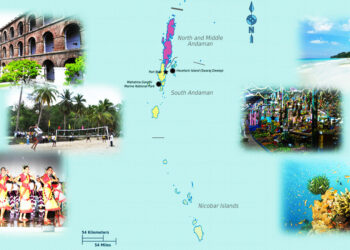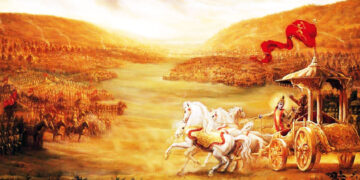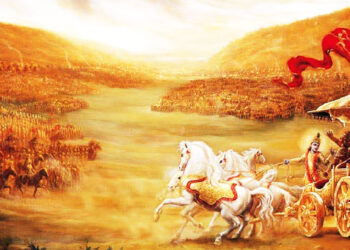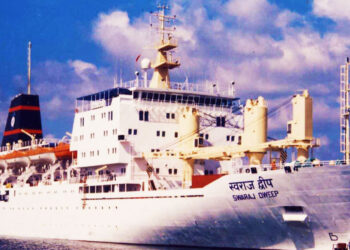The Andaman & Nicobar Islands are a tropical paradise known for their stunning beaches and vibrant marine life. But beyond the popular tourist attractions, these islands hold many intriguing secrets and lesser-known facts that are sure to captivate your curiosity. Here are ten fascinating facts about the Andaman & Nicobar Islands that you probably didn’t know.
Home to One of the Last Uncontacted Tribes
The Andaman Islands are home to the Sentinelese, one of the last uncontacted tribes in the world. Living on North Sentinel Island, the Sentinelese have resisted contact with the outside world for thousands of years, preserving their unique way of life. They are known to be fiercely protective of their privacy, and attempts to make contact have been met with hostility. This isolation has allowed them to maintain their ancient traditions and lifestyle, untouched by modern civilization.
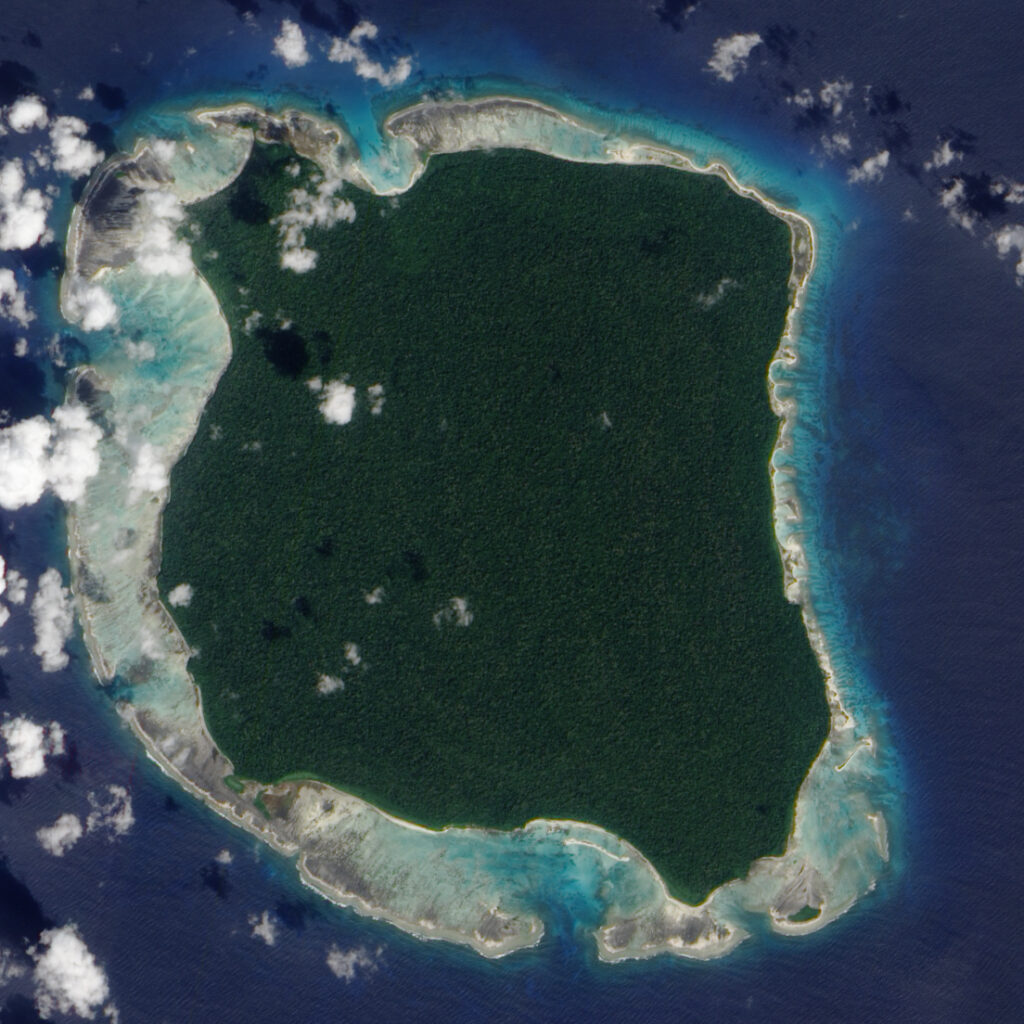
Fact Source: Survival International
The Only Active Volcano in India
The Andaman & Nicobar Islands are home to Barren Island, the only active volcano in India and South Asia. This volcano has erupted several times, with the most recent eruption occurring in 2017. Despite its name, the island supports a small population of goats and other wildlife. The sight of the volcano, with its smoking crater and rugged landscape, is both awe-inspiring and a reminder of the earth’s dynamic nature.

Fact Source: Geological Survey of India
A Hub for Marine Biodiversity
The waters surrounding the Andaman & Nicobar Islands are part of a unique marine ecosystem that supports over 1,200 species of fish, 350 species of echinoderms, and 1,000 species of mollusks. The coral reefs here are some of the most pristine in the world, making it a hotspot for marine biodiversity. These reefs are not only a visual delight for snorkelers and divers but also play a crucial role in the health of the marine environment.

Fact Source: National Centre for Coastal Research
A Land of Myths and Legends
The Andaman & Nicobar Islands are steeped in myths and legends. One such legend speaks of the Jarwa tribe’s origin, claiming they descended from shipwreck survivors. Another tale tells of the Nicobar Islands being inhabited by an ancient race of giants. These stories add a mystical allure to the islands, inviting visitors to delve into the rich tapestry of local folklore.
Fact Source: Anthropological Survey of India
The Cellular Jail: A Dark Past
The Cellular Jail, also known as Kala Pani, is a historic colonial prison in Port Blair. It was used by the British to exile political prisoners during the Indian independence movement. The jail’s architecture and the stories of the inmates reflect a dark chapter in India’s history. The prison is now a national memorial, offering a poignant reminder of the struggles and sacrifices made by those who fought for India’s freedom.
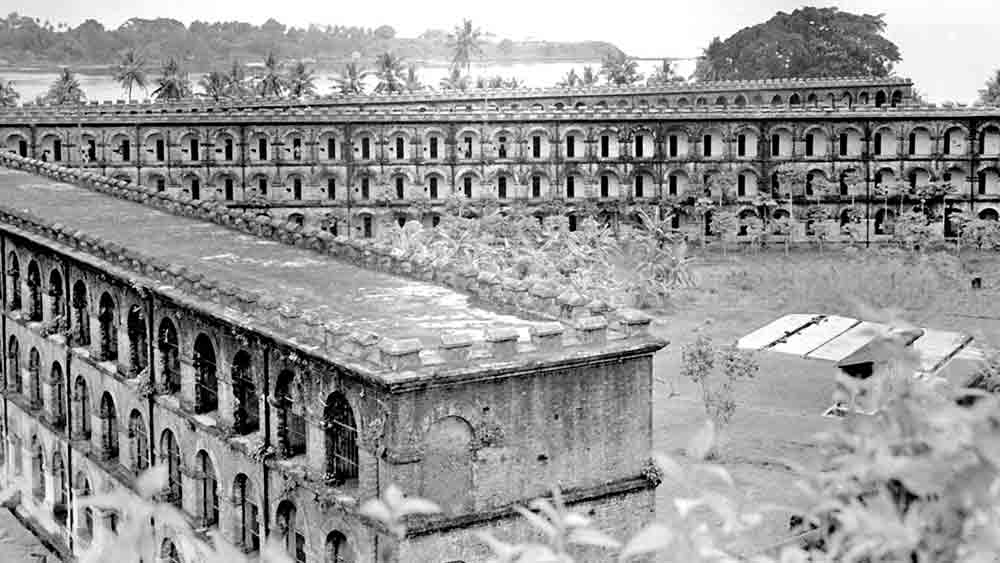
Fact Source: Ministry of Tourism, India
Unique Cultural Festivals
The islands are a melting pot of cultures, celebrating a variety of festivals with great fervor. The Island Tourism Festival, held annually in January, showcases the islands’ diverse cultural heritage with music, dance, and local crafts. This festival is a vibrant display of the rich cultural mosaic that defines the Andaman & Nicobar Islands, attracting visitors from all over the world.
Fact Source: Andaman & Nicobar Tourism
The Origin of the Name “Andaman”
The name “Andaman” is believed to be derived from Hanuman, the monkey god of Hindu mythology. The name “Nicobar” is thought to come from the Malay word “Nakkavaram,” which means “land of the naked.” These names reflect the deep historical and cultural connections that the islands have with the surrounding regions and their rich mythological past.
Fact Source: Encyclopedia Britannica
A Blend of Indigenous Tribes
The islands are home to several indigenous tribes, each with its own unique culture and traditions. The Great Andamanese, Onges, Jarwas, and Shompens are some of the prominent tribes, each contributing to the rich cultural tapestry of the islands. Their traditional practices, languages, and lifestyles offer a glimpse into human history and the diversity of indigenous cultures.
Fact Source: Cultural Survival
Natural Caverns and Geological Wonders
The islands boast a number of natural caverns and geological formations. The limestone caves in Baratang Island are particularly famous for their unique stalactites and stalagmites, offering a glimpse into the geological history of the region. These formations are a testament to the slow, yet powerful, forces of nature that have shaped the islands over millennia.

Fact Source: Geological Survey of India
Rich in Bird Diversity
The Andaman & Nicobar Islands are a birdwatcher’s paradise, home to over 270 species of birds, including several endemic species like the Andaman wood pigeon, Andaman scops owl, and Nicobar pigeon. The islands’ diverse habitats provide ideal conditions for birdlife, making them a crucial sanctuary for these avian species.
Fact Source: BirdLife International
Conclusion
The Andaman & Nicobar Islands are much more than just a tropical getaway. From their rich cultural heritage and unique wildlife to their fascinating geological features and historical significance, these islands offer a wealth of intriguing stories and experiences. Whether you’re a history buff, a nature enthusiast, or simply a curious traveler, the Andaman & Nicobar Islands have something extraordinary to offer.


